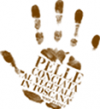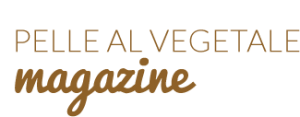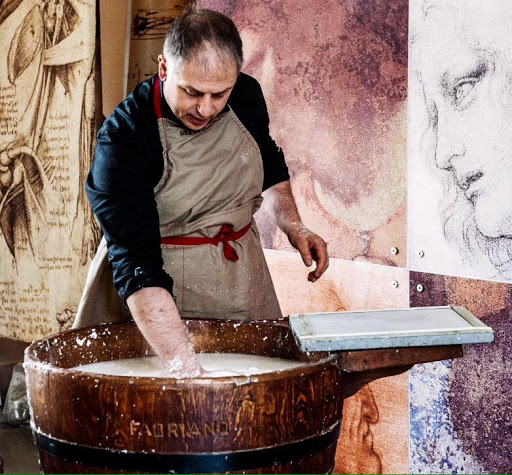An interview with Faye, shoemaker and founder of Sevilla Smith, who tells us her story, values and idea of craftsmanship.
Can you tell us something about your start-up story…how it has evolved overtime and how you are working today. What your values, challenges, and dreams for the future?
History. I would say that my making journey began in the Film Industry. I spent 18 years in Los Angeles working as a wardrobe Supervisor in films which meant helping to create thousands upon thousands of costumes and collaborating with hundreds of seamstresses, shoemakers, milliners, armor makers etc etc around the world. Working in this industry can make you very knowledgeable of many aspects of many crafts, but the pace of the work didn’t allow for slower, deeper understanding of crafts. Longevity of the product was also not so necessary. But the timelessness of the aesthetics (when we film as long as 2 years before release) is critical in that work.
Values. I was fortunate to spend my time between Europe and the US, so when an opportunity came up to learn shoemaking from an Italian shoemaker living in Barcelona, I jumped at the chance. Once I returned to the US, I knew that I wanted to create a shoe brand which was firmly grounded in the values that I wanted to further. Film work’s collaborative process made it easy for me to create a brand that was not grounded in a design ego. Instead the values of what I wanted dictated every aspect of Sevilla Smith. Environmental, over consumption, and feminist concerns were big issues for me then, as they are now 6 years later. Client driven customizations, made to order, simple, hand crafted, timeless, comfortable, versatile and affordable shoes were essential to what I designed. Historical footwear became a wonderful source of inspiration as the commonality of owning only 1-2 pairs of shoes ran parallel with our list of core values.
Challenges. One of the biggest challenges we have price point. We wanted to be accessible to the mass market, but I knew that our other core values dictated that we also use the best materials: veg tan soles, uppers, and stacked leather heels. I wanted to minimize any petroleum based products or toxic glues. Handmade to order footwear is typically much too expensive for the masses. I wanted to stay with a retail price under $300 and most footwear in this price range are made in countries with a minimum wage for a skilled shoemaker at 10-15x less than a living wage in the US. So my designs had to comply with labor costs of a product made in the US. I started with 50designs that I needed to make myself. It is easy to fall into the wonderful calm of crafting, but if a design took more time to prototype than what I had allotted , it wasn’t released.
Dreams. My hope is that we can show as many people that repairable made to order footwear that is made with biodegradeable materials is possible in an accessible price point. That footwear that is made of synthetics and non repairable has an immensely shorter lifespan.
How did you discover Tuscan Veg Tan Leather? Did you learn about the Consortium through one of the member tanneries?
I discovered the beauty of Tuscan Veg Tan Leather thru a Spanish supplier who carried mostly chrome tanned leather. The beauty of Tuscan Veg Tan Leather really stands out amongst others. But I didn’t learn about the Consortium until I came to Linea Pelle years later.
Do you find the leather to be a good match for your shoe construction and philosophy?
The leather is a perfect match for our shoe construction and philosophy. The responsible sourcing, ethical manufacturing, and quality of the leather is ideal for our shoes. Also, the member tanneries, especially Tempesti who we use often, are able to thin our leather to exactly what we need. Since we use unlined leather for our uppers, we need the leather to be soft enough to last, but thick and waxy enough to hold it’s shape well over time.
What about your customers: what do they tell you about why they choose to wear your shoes?
They choose our shoes mostly because of comfort and the beauty that handmade shoes exude. Our shoes are sold primarily thru word of mouth, and the clients who tell us they have been stopped often on the street by someone who finds our shoes interesting enough to ask. But our community is built on the values of using sustainable materials and ethical production. Our sales represent almost 50% as repeat customers.
…and what questions they have about veg tan leather?
There is much confusion about veg tan being somehow similar to vegan leather. Also, many people mistake the soling leather and heel leather as wood.
Are there other products you are developing using Veg Tan leather?
I have just finished a capsule collection of sculpted Veg Tan leather vases and trays. I wanted to show off the beautiful soft shapes of leather while also communicating how hard and rigid the material can be. In that way it reminds me of women, which can be ironic as leather goods can be very masculine.I have lighting and molded leather furniture that I hope to develop soon.
What could be helpful, on the part of Consortium, to help you communicate with your customers to make informed choices?
I think it would be very helpful if you can specify exactly the standards you expect from your member tanneries in an easily digestible format (a list?) it can help manufacturers like us convey that to our clients easily. Also, some history on each of your member tanneries. Many of them have beautiful ancestry, it would be nice to share that with consumers.



